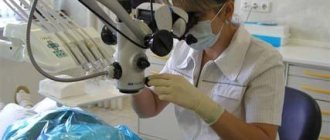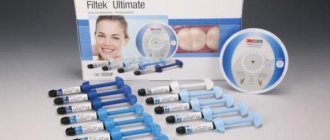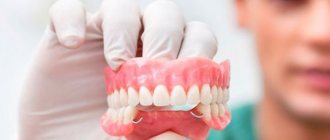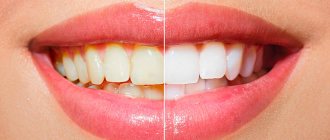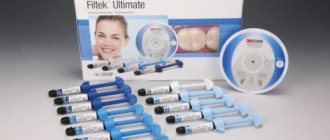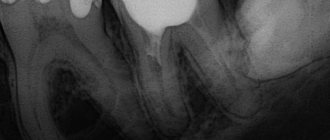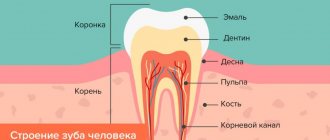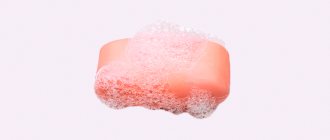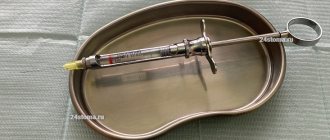For professional dental care, various methods and tools are used, among which one of the main places is grinding the enamel with subsequent polishing. The technique is used independently or simultaneously with other manipulations, for example, after removing large stone deposits. Often the method is used during preparation for other processes, for example, prosthetics or restoration with veneers.
Grinding is performed for primary processing, removal of irregularities and roughness, microcracks. At this stage, stone and soft plaque are eliminated, and caries is prevented. Polishing is carried out after grinding. They completely smooth out enamel unevenness and eliminate minor imperfections. Additionally, this step has a mild whitening effect by removing deposits. But there is a slight increase in color, as the natural shade is restored. If the purpose of the procedure is serious whitening, then the doctor uses other methods and drugs.
Tools and procedure features
There are four types of procedures, including grinding and polishing of enamel:
- traditional mechanical;
- ultrasonic;
- air;
- laser (one of the safest).
The traditional method is used when there is a large volume of deposits. To do this, the dentist uses different types of handpieces and a drill. Under the influence of an abrasive coating, deposits are removed, exposing the enamel and restoring the color of the teeth. The cost of the procedure is affordable, but the patient may feel discomfort during cleaning. Therefore, such manipulations are not recommended for people whose tissue sensitivity is increased. If other methods fail to remove stones, local anesthesia may be used.
The ultrasound method is painless and effective. The procedure is performed using a special apparatus and replaceable tips. Ultrasonic exposure allows you to work with hard-to-reach areas and remove plaque from the subgingival area. The patient does not feel discomfort or pain, the procedure is carried out quickly.
The air method is one of the most common. The surface is treated with a strong air flow under pressure using an abrasive mixture. Little time is spent on work, the process does not cause pain or discomfort. A slight lightening effect is achieved.
Laser enamel resurfacing is an expensive procedure. To perform the manipulations, special equipment is used, with which you can remove complex plaque from all areas of the row. The enamel whitens and deposits accumulate much more slowly.
When performing work, a dentist uses special tools. With laser and ultrasound methods, additional funds are not needed; the equipment used, already equipped with everything necessary, including attachments, is sufficient.
The air method uses abrasive powders with grains of different fractions. To remove stone and large volumes of plaque, compositions with large particles are selected. For final polishing - fine powders. There are also tips and processing pastes. On flat areas, rubber cup-shaped nozzles are used, for hillocks - with a cone-shaped nozzle. Hard-to-reach places are cleaned using pins and strips. When choosing pastes, you need to pay attention to the color, which indicates the graininess. Yellow pastes are intended for soft finishing polishing, blue pastes are rough, used for initial removal of deposits. If necessary, intermediate compositions of green and red colors are used.
The long-term result of restoration work is influenced by the finishing. Its quality depends on the size of the inorganic filler particles in the filling material and the polishing system itself. Therefore, the goal of the work was to determine the best dental material (composite, GIC) according to the “polishability” criterion based on studying the AFM results. As a result of the research, the best systems for final finishing of restorations, systems with intermediate indicators and unsatisfactory results were established. The best combination of filling material and finishing system.
Purpose of the study.
Currently, the dental market offers a variety of filling materials for direct and semi-direct restorations, as well as for their finishing. One of the characteristics of GIC and composite materials is the size of the inorganic filler particles. This property determines the finishing process of the restoration. Each manufacturer in the description of the material, in addition to properties (strength, wear resistance, color stability), indicates such quality as: “excellently polished, quickly achieving a “dry shine” and its long-term preservation!”, but does not indicate which polishing system will allow achieve such a result. For final finishing, different groups of single- and multi-step polishing systems are available. The result of the grinding and polishing stages is the final appearance of the restoration, its safety, susceptibility to pigmentation, accumulation of soft plaque and, as a consequence, the likelihood of a relapse of the carious process.
1. Determine the best dental material (composite, GIC) based on the results of grinding and polishing produced by various polishing systems.
2. Find out the most rational combination of filling material and polishing system to create the smoothest surface possible;
Material and methods.
To achieve these goals, samples were made in the form of blocks from various groups of dental materials with a diameter of 6.5 mm and a height of 3 mm in the amount of 15 pieces, which were divided into five groups, several studies in each. Samples. List of materials and polishing systems studied: 1) microhybrid composite (Megadenta) and KENDA polishing heads; 2) microhybrid composite (Megadenta) and Enhance polishing set for composites (polishing heads and pastes); 3) microhybrid composite (Megadenta) and a complex of paste (Fine and medium) and a synthetic brush; 4) microhybrid composite (Megadenta) and Diamond Polich diamond polishing paste; 5) microhybrid composite (Megadenta) and Sof-Lex grinding and polishing discs; 6) universal nanohybrid restoration composite and KENDA polishing heads; 7) universal nanohybrid restoration composite and complex of paste (Fine and medium) and synthetic brush; universal nanohybrid restoration composite and Diamond Polich diamond polishing paste; 9) universal nanohybrid restoration composite and discs for grinding and polishing Sof-Lex; 10) universal nanohybrid restoration composite and Enhance polishing set for composites (polishing heads and pastes); 11) highly aesthetic universal nanocomposite and KENDA polishing heads; 12) highly aesthetic universal nanocomposite and Enhance polishing set for composites (polishing heads and pastes); 13) highly aesthetic universal nanocomposite and complex of paste (Fine and medium) and synthetic brush; 14) highly aesthetic universal nanocomposite and Diamond Polich diamond polishing paste; 15) highly aesthetic universal nanocomposite and discs for grinding and polishing Sof-Lex.
Samples. List of materials and polishing systems studied: 1) microhybrid composite (Megadenta) and KENDA polishing heads; 2) microhybrid composite (Megadenta) and Enhance polishing set for composites (polishing heads and pastes); 3) microhybrid composite (Megadenta) and a complex of paste (Fine and medium) and a synthetic brush; 4) microhybrid composite (Megadenta) and Diamond Polich diamond polishing paste; 5) microhybrid composite (Megadenta) and Sof-Lex grinding and polishing discs; 6) universal nanohybrid restoration composite and KENDA polishing heads; 7) universal nanohybrid restoration composite and complex of paste (Fine and medium) and synthetic brush; universal nanohybrid restoration composite and Diamond Polich diamond polishing paste; 9) universal nanohybrid restoration composite and discs for grinding and polishing Sof-Lex; 10) universal nanohybrid restoration composite and Enhance polishing set for composites (polishing heads and pastes); 11) highly aesthetic universal nanocomposite and KENDA polishing heads; 12) highly aesthetic universal nanocomposite and Enhance polishing set for composites (polishing heads and pastes); 13) highly aesthetic universal nanocomposite and complex of paste (Fine and medium) and synthetic brush; 14) highly aesthetic universal nanocomposite and Diamond Polich diamond polishing paste; 15) highly aesthetic universal nanocomposite and discs for grinding and polishing Sof-Lex.
Each block was sanded and polished using a variety of systems to the recommended standards specified by the manufacturers: 1) KENDA polishing heads; 2) Enhance polishing set for composites (polishing heads and pastes); 3) a complex of paste (Fine and medium) and a synthetic brush; 4) Diamond Polich diamond polishing paste; 5) discs for grinding and polishing Sof-Lex.
Due to the severe contamination of the sample surface with unbound processing products (particles) of the material, all samples were cleaned in an ultrasonic bath in deionized water for 5 min before scanning.
The quality of the polished surface was studied using an atomic force microscope NanoEducator, MFP-3D SA (USA). Images were obtained using an atomic force microscope in semi-contact mode. A high-resolution AFM scanning probe microscope based on the interaction of a cantilever probe with the surface of the sample under study. The spatial resolution of an atomic force microscope depends on the radius of curvature of the probe tip. AFM allows you to obtain a real three-dimensional surface relief.
The received data was processed, statistics were calculated by the Statistic 6.0 program.
Results.
When studying blocks of materials, several indicators of surface characteristics were taken into account: average surface roughness, Rms (grains), asymmetry, surface area, area difference coefficient. Conclusion on the material - microhybrid composite (Megadenta). Surface roughness parameters. The coefficient of difference in area when using the polishing system Sof-Lex discs is 0.01733; when using the Diamond Polich polishing system - 0.05615. Rms (grains), nm when using the polishing system Sof-Lex discs - 29.8; when using the Diamond Polich polishing system - 18.9. Conclusion on the material - a universal nanohybrid restoration composite. Surface roughness parameters. The coefficient of difference in area when using the polishing system Sof-Lex discs is 0.02748; when using the Diamond Polich polishing system - 0.00638. Rms (grains), nm when using the polishing system Sof-Lex discs - 47; when using the Diamond Polich-19.8 polishing system. Conclusion on the material - a universal nanocomposite. Surface roughness parameters. The coefficient of difference in area when using the polishing system Sof-Lex discs is 0.00564; when using the Diamond Polich polishing system - 0.00361. Rms (grains), nm when using the polishing system Sof-Lex discs - 23.1; when using the Diamond Polich polishing system - 18.2.
Based on the results of studies of blocks of three different composite materials using the grinding and polishing stages were carried out by one system - Diamond Polich, the best results were achieved with the material - a universal nanocomposite Rms (grains), nm when using the Diamond Polich and Sof-Lex polishing systems on various composites: 18.9 (Megafill MH (Megadenta), Diamond Polich); 19.8 (Filtek Z550, Diamond Polich); 18.2 (Filtek Ultimate, Diamond Polich); 29.8 (Megafill MH (Megadenta), Sof-lex discs); 47 (Filtek Z550, Sof-lex disks); 23.1 (Filtek Ultimate, Sof-lex discs).
Conclusion.
As a result of the research, the best combination of filling material and finishing system was identified to achieve the best results. The data was proven using the NanoEducator AFM system, MFP-3D SA (USA).
Indications and contraindications
The procedure for grinding and subsequent polishing of the enamel surface is indicated in the following cases:
- presence of hard and soft deposits;
- condition after filling;
- as a preventive measure when wearing braces;
- before prosthetics to exclude complications, the development of caries, soft tissue diseases;
- for regular care, restoration of the natural shade of enamel, improving the aesthetics of the range.
Contraindications to the procedure include:
- state of deep caries damage, multiple defects requiring preliminary treatment;
- inflammation of the gums, bleeding, other soft tissue diseases;
- increased enamel sensitivity;
- inflammatory processes in the acute stage;
- The Patient has an individual intolerance to the abrasive pastes used.
Most contraindications are relative. They must be eliminated, after which you can polish, restoring the natural color. But only a doctor can make a decision about the possibility of such manipulations after a visual examination and some diagnostic measures, if the need arises.
Doctor's recommendations
After completing the procedure, you must follow the dentist's advice:
- correction of the diet for the first time, refusal of coffee or tea, coloring foods or fruits that contain active acids;
- inclusion of medium-temperature dishes in the menu, which will protect against soreness and discomfort in the first couple of days;
- Limit alcohol intake and smoking.
You should also constantly pay attention to personal hygiene. This is cleaning using special brushes and pastes, using irrigators and rinses. Preventive appointments at least once every six months will help monitor the condition of the oral cavity, identify problems in a timely manner and begin treatment if necessary.
The use of abrasive materials in dentistry.
For polishing and grinding dentures, a variety of materials are used, which include fine-grained substances that are superior in hardness to the material being processed. Such materials are called “abrasive”, from the Latin. "abrasio", which means "scraping".
In industrial production, abrasive grains are most often used to make various tools, powders and pastes.
Abrasive materials can be divided into natural and artificial. Natural stones include chalk, pumice, garnets, emery, corundum and diamond. Artificial abrasives are produced chemically. The most common are: electrocorundum, silicon carbide, boron carbide, tungsten carbide, and nitrites (elbor).
Artificial abrasives
Electrocorundum is a crystalline aluminum oxide obtained artificially from rocks that contain alumina. There are normal electrocorundum (contains 87% aluminum oxide), white electrocorundum (up to 97%), and monocorundum (up to 99%).
Silicon carbide (carborundum) is a compound of silicon and carbon. Silicon carbide comes in two types: black silicon carbide (contains at least 95% SiC), and green silicon carbide (over 97% SiC).
Boron carbide contains 85-95% pure crystalline B4C.
Tungsten carbide is used to make burs and certain grinding tools.
Cubic boron nitrite is identical in hardness to diamond. Its other name is “Elbor”.
Manufacturing of grinding tools from abrasive
The abrasive powder used for surface grinding can be used as a suspension in oil or water. It is added to the paste applied to paper or canvas. But still, the bulk of the abrasive is spent on the production of grinding tools such as bars and wheels.
Ligaments
Binding materials that are used to connect abrasive grains to each other can be organic and inorganic.
Inorganic binders include silicate, ceramic and magnesite, and organic binders include volcanic and bekelite.
Inorganic binders
The ceramic bond is made from chalk, talc, fire clay, feldspar and liquid glass. The disadvantage of the ceramic bond is its fragility.
The silicate bond is liquid glass. Silicate bonded wheels are used for sharpening certain tools.
Magnesite binder consists of magnesium chloride and magnesite. Tools made with this bond have low resistance to moisture and are used only for dry grinding.
Organic binders
Bakelite bond has high elasticity and strength, so the action of an abrasive tool based on it is very soft and gentle.
Vulcanite bond is vulcanized rubber. Vulcanite bonded grinding tools are characterized by high elasticity and strength, but at the same time have low heat resistance. Vulcanite discs in orthopedic dentistry are used for teeth separation, preparation, and also for cutting metal parts.
Abrasive tools
Abrasive tools are made in the form of disks, circles, bars, heads and segments. Tools differ from each other in shape, type of abrasive material, bond, structure, grain size, as well as strength, hardness, moisture and heat resistance.
Tool selection
The choice of grinding tool depends on the properties of the object to be processed. For example, for hard alloys it is more rational to use tools with a ceramic bond made of monocorundum. For processing palladium, gold-based alloys and stainless steel, it is advisable to use tools made of monocorundum or electrocorundum with a ceramic bond.
The preparation and grinding of dental crowns is carried out with abrasive tools, which include black silicon carbide or green silicon carbide on a ceramic bond.
Grinding of fillings and inlays, separation of natural teeth and preparation of proximal surfaces is carried out using separation discs. Discs are available in nickel-based diamond, paper, metal and vulcanite. Vulcanite discs are made from green or black silicon carbide on a vulcanite binder with a grit size of 150-220.
For grinding metal prostheses on grinding machines, wheels made of normal electrocorundum on a vulcanite bond with a grain size of No. 150-180 are used.
When cutting metals, cutting wheels are used, which are made from black and green silicon carbide, as well as electrocorundum in a vulcanite binder.
Sanding devices (filtes) are made of felt and felt. Thanks to the felts, you can sand very curved surfaces.
